Islamorada: Luxury, Legacy and Fishing
Charles Greenfield goes fishing
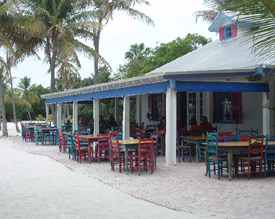
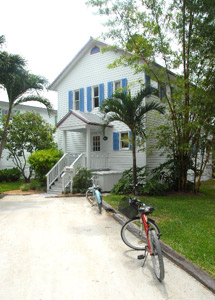
Charles Greenfield is a Miami-based travel writer who has contributed to Travel & Leisure and regional magazines/ newspapers. He also is Cultural Arts Contributor to Artsbeat on WLRN 91.3 FM, South Florida’s NPR affiliate, a producer for WLRN Ch. 17’s Artstreet, and has written on classical and jazz musicians for the Miami Herald.
Islamorada in Spanish literally means “Purple Island,” a name that contains some truth when the western sky glows with the fading tropical colors of a Florida Keys sunset. Unlike Key Largo, which increasingly resembles a South Dade suburb, and Marathon, with its working class ethos, Islamorada maintains a more sophisticated façade.
Touted as the “Sport Fishing Capital of the World” it welcomes anglers worldwide for bonefish and tarpon on the flats and sailfish or dolphin (mahi-mahi) off the ocean reefs. It is no surprise that strict building codes have created a more gentrified community of snowbirds and affluent tourists where fast food restaurants are discouraged and garish highway frontage is kept to a minimum. Reassuringly, there’s even the second generation, family-owned Theater of the Sea (Mile Marker 84.5, ocean side) that still produces entertaining, glitz-free daily marine mammal shows and provides refuge for injured sea turtles, birds and alligators around its salt water lagoon.
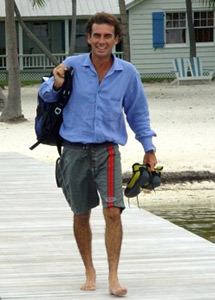
Traditionally, the community has encouraged upscale hostelry. Owner of The Moorings Village (MM 81.6, ocean side) Hubert Baudoin (pictured right) grew up in West Africa’s Ivory Coast where his enterprising father successfully purchased and processed coffee and cocoa beans for exportation. In 1988 while windsurfing off Islamorada, Hubert discovered the overgrown 18-acre former coconut plantation and envisioned a low-key but chic assemblage of cottages and houses sensitive to the Keys’ delicate ecosystem of sand, water and sparse vegetation. Today, a true resort for body and spirit, the verdant canopy of 600 coconut palms with its 1,100-foot private beach hosts photo and film production teams as well as discerning travelers in 18 one-, two- and three-bedroom homes that include wrap-around verandas, tin roofs, cypress wood floors, and Mexican tile. Says Baudoin: “The Moorings is the place where the simplest of things can become of great value. You can walk, swim, or just sit on your porch for hours – watching nature take her course.”
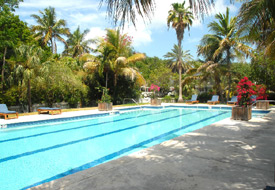
After a welcome drink in the reception overhung by a huge banyan, I crossed the road opposite the lovely 25-meter swimming pool and tennis courts to my gingerbread-trim two-bedroom abode “Eyster” with its spanking-new stainless steel kitchen, washer-dryer, ceiling fans and central a-c, oversized soaking tub and shower stall, and large screen TV. With a complimentary bike I rode past their in-house Island Body & Sol Spa (kobido, their signature Japanese facial) to the Keys’ Old Highway where cute boutiques and art galleries on “Morada Way” open their doors daily (every third Thursday monthly attend their fun walkabout with food and crafts stands).
Across U.S. 1 Baudoin maintains two fine dining venues under the able hands of executive chef Benjamin Loftus. For lunch and “sunsets” (breakfast, too) guests will enjoy Morada Bay Beach Café (pictured left) for their 18 rum offerings, raw bar, grouper tacos, shishito peppers and conch fritters; next door, the two-story Pierre’s Restaurant boasts a rich wood-paneled Hemingway-style bar with Peter Beard photos of fierce lions and an enormous 15-foot Nile crocodile. Outside on the veranda, feast on sashimi salad, lamb ravioli, oyster Rockefeller, hogfish meuniere, and their excellent hot skillet filet mignon with black truffle mashed potatoes.

History plays a fascinating role in Islamorada. The tiny oceanside Indian Key State Historic Site, an early salvage wrecking colony and the original county seat for Miami-Dade, was attacked by Seminoles in 1836. The islet provides an observation tower, dock, shelter, and trails, accessible by boat and kayak from Robbie’s Marina and Boat Rentals on Lower Matecumbe (M.M. 77.5, bayside). At Robbie’s with its colorful gift stands and shops visitors for a small fee can feed tarpon and jacks from the dock, take a backcountry kayak tour or snorkel trip (Florida Keys Kayak), and visit 280-acre Lignumvitae Key State Botanical Site just offshore for its rare flora (strangler fig, poisonwood, pigeon plum), the 1919 Matheson House with windmill and cistern, and ancient Indian shell heaps or middens. For family fishing fun take Robbie’s half-day or evening partyboat Capt. Michael for yellowtail, grunt and grouper on the patch reefs off the 1873 ironpile black-and-white Alligator Reef Lighthouse. Back at the dock you can have your catch cooked at the Hungry Tarpon followed by Chef Joseph’s fine key lime pie.
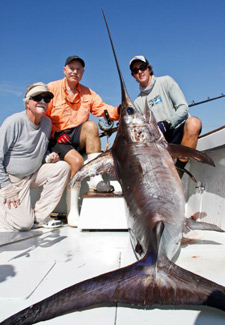
What draws visitors to Islamorada unquestionably is the fishing. “I’ll go out late in the afternoon in my flats skiff for bonefish or tarpon and realize there is no place in the world as beautiful,” says Richard Stanczyk, owner of Bud N’ Mary’s Fishing Marina (MM 79.8, ocean side pictured right), Islamorada’s premiere headquarters for Florida bay back country guides, off shore charter boats like the Kalex with Captain Alex Adler, boat rentals, and the 65-foot air-conditioned Miss Islamorada, the marina’s yellowtail partyboat that fishes the reefs daily (9:30am-4:30pm). Stanczyk discovered daytime swordfishing offshore in the last decade and his son Nick recently pulled in a specimen weighing a hefty 450 pounds. Stanczyk even offers reasonably priced motel rooms, “tackleshop” efficiencies, a penthouse, beach house and a houseboat for fishing diehards who insist on boarding one of the 44 boats at the crack of dawn.
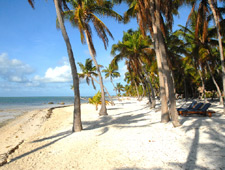
The next day I drove north to Key Largo and fished all day for yellowtail with Captain Chan on the Gulfstream from Ocean Bay Marina (MM 99.5, ocean side). Using a technique called “sandballing” (a mix of oats, fish oil and sand) we drifted our baits in the slick off the stern and caught large yellowtail. Back at The Moorings we cooked the filets, drank some white wine, and watched the “purple” sunset. Hubert Baudoin claims he is trying to recreate what storms and development have erased, to re-imagine the Keys before the invasion of concrete, neon signs and other kinds of pollution. “Peace and quiet is becoming scarce,” he says, “and we are trying to preserve it.” And for a brief moment that seems very possible.


